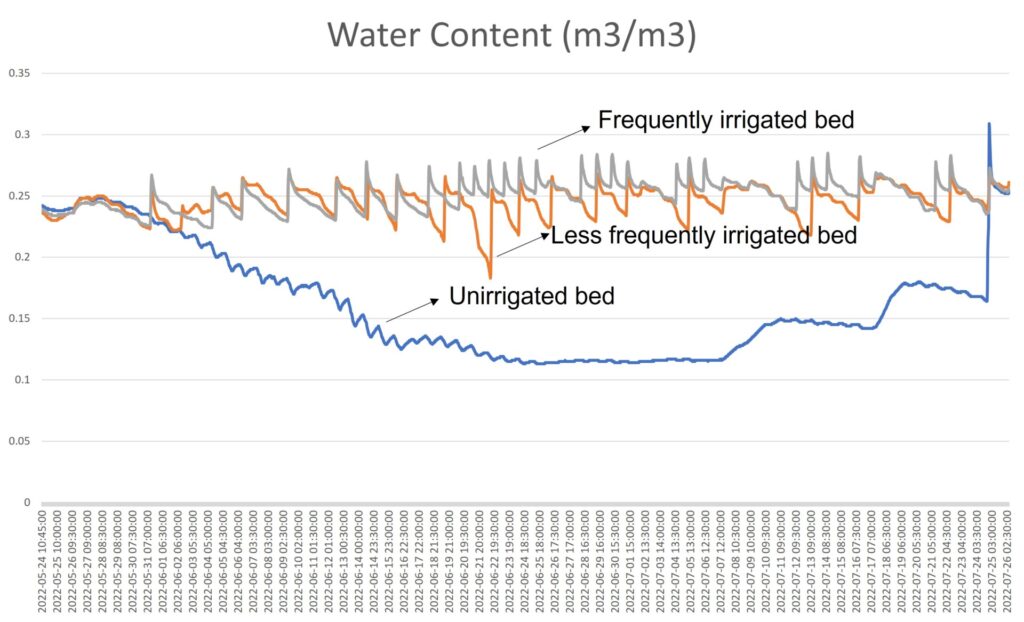At Southwest Purdue Ag Center (SWPAC), more than 10 inches of rain fell since July 7; over 8 inches happened since the evening of July 24.
Soil water content on the unirrigated tomato/pepper/eggplant bed (12’’ under plastic mulch) increased from 10% (early July) to about 15% after 3 inches of rain on July 7-9. The soil was saturated (soil water content above 30%) during the recent rains; the water content reduced to field capacity (26% or 0.26) a few hours after the rain stopped. On the frequently irrigated bed, soil water content stayed at or slightly above field capacity most of the season. Water depleted about 20% between irrigation events on the less frequently irrigated bed (Figure 1).
Tomato harvest started in early July. Until the recent harvest, the unirrigated bed had around 54% of fruit (in number) that showed blossom end rot (BER), 13% from the less frequently irrigated bed, and 6% from the most frequently irrigated bed. We harvested most BER fruit in the first weeks’ harvest before the rain started in July. There was little BER fruit at the most recent harvest on July 22. Other physiological disorders (see article Physiological Disorders after Heavy Rains) and insect damage resulted in large percentages of unmarketable tomato fruit during the recent harvests.
We have harvested peppers for three weeks. There was a large amount of unmarketable pepper fruit in the first two weeks’ harvest, likely due to sunburn and high-temperature damage. Fruit marketability was greatly improved with the recent cooler and rainy days. Up-to-date yield and fruit marketability were similar among irrigation treatments.
Eggplant harvest was in the third week. The up-to-date yield was about half on the unirrigated bed compared to the irrigated beds. Almost all the fruit was marketable regardless of the irrigation treatments.
Cantaloupe harvest started in early July. A noticeably delayed fruit ripening was observed on unirrigated bed. While the up-to-date number of fruit harvested among irrigation treatments was similar. The watermelon harvest will start this week.
More information about this demonstration can be found in the previous newsletter article
Funding for project Improve Drip Irrigation Management for Vegetables and Melon Production in Indiana was made possible by the Indiana State Department of Agriculture through grant A337-22-SCBG-21-003. Its contents are solely the responsibility of the authors and do not necessarily represent the official views of the ISDA.
